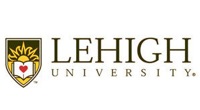Below is a summary of the abstract you submitted. Presenting author(s) is shown in bold.
If any changes need to be made, you can modify the abstract or change the authors.
You can also download a .docx version of this abstract.
If there are any problems, please email Dan at dar78@pitt.edu and he'll take care of them!
This abstract was last modified on April 21, 2015 at 11:53 p.m..

Our PHAGES program focuses on isolating and characterizing phages that infect M.smegmatis, thereby contributing to understanding phage genomic structure, functional diversity, and genome evolution. At Lehigh, phage research allows students to contribute new mycobacteriophage isolates to a growing collection and to participate in research developed from previous bioinformatics discoveries. Two research efforts are reported: I. Annotation of newly isolated Sneeze (G), Jane (G), and Jabiru (A5) genomes revealed novel gene features, including orphams in both G cluster phages and a new A5-specific gene found in Jabiru and Union Jack. II. Ongoing research to characterize the Butters (N) genome and to understand the biology of this phage continues. We report on experiments that explore phage immunity mechanisms using bioinformatics approaches and Butters lysogens as vehicles to investigate immunity relationships between phage clusters. Immunity tests were performed using a phage panel of clusters A – S and Butters lysogen strains (harboring wildtype or mutant prophages - the latter isolated to propagate lytic-incompetent phages in other studies) to determine which, if any, phages are homoimmune with Butters. Notably, phages Rockstar (A3), Timshel (A5), Benedict (A6), Trike (A10), and Nova (D) were unable to infect Butters lysogens, thereby suggesting a common mechanism between phages for down-regulating lytic genes. Among several mechanisms that could account for the observed homoimmunity, we favor the hypothesis that the Butters repressor binds to stoperators within these phages and blocks lytic gene expression. A corollary of this hypothesis is that the Butters genome itself contains sequences with significant homology to stoperators identified in A cluster phages. BLAST analysis reveals 53 putative A cluster stoperator hits within the Butters genome as potential repressor binding sites. Alternatively, immunity mechanisms may involve toxin production (resulting from prophage integration) that blocks superinfection by specific, but not all phage types. To determine what, if any, genes are affected by prophage integration, we used bioinformatics to predict attP/attB for Butters and M. smegmatis mc<sup>2</sup> 155, respectively, based on published predictions for phages encoding tyrosine integrases (e.g., Sampson et al., 2009. Microbiol. 155, 2962), where attP resides between the repressor and integrase genes, and attB is located typically within a tRNA gene. In Butters, attP is predicted within the repressor and BLAST analysis shows two strong hits as putative attB sites overlapping M. smegmatis tRNA<sup>Arg</sup> (coordinates, 4797480-4797552) and tRNA<sup>Lys</sup> (5834573-5834645) genes, to be confirmed by PCR analysis. Whether or not Butters lysogens contain more than one prophage and/or produce toxins that target specific phage types preventing superinfection will be discussed.

